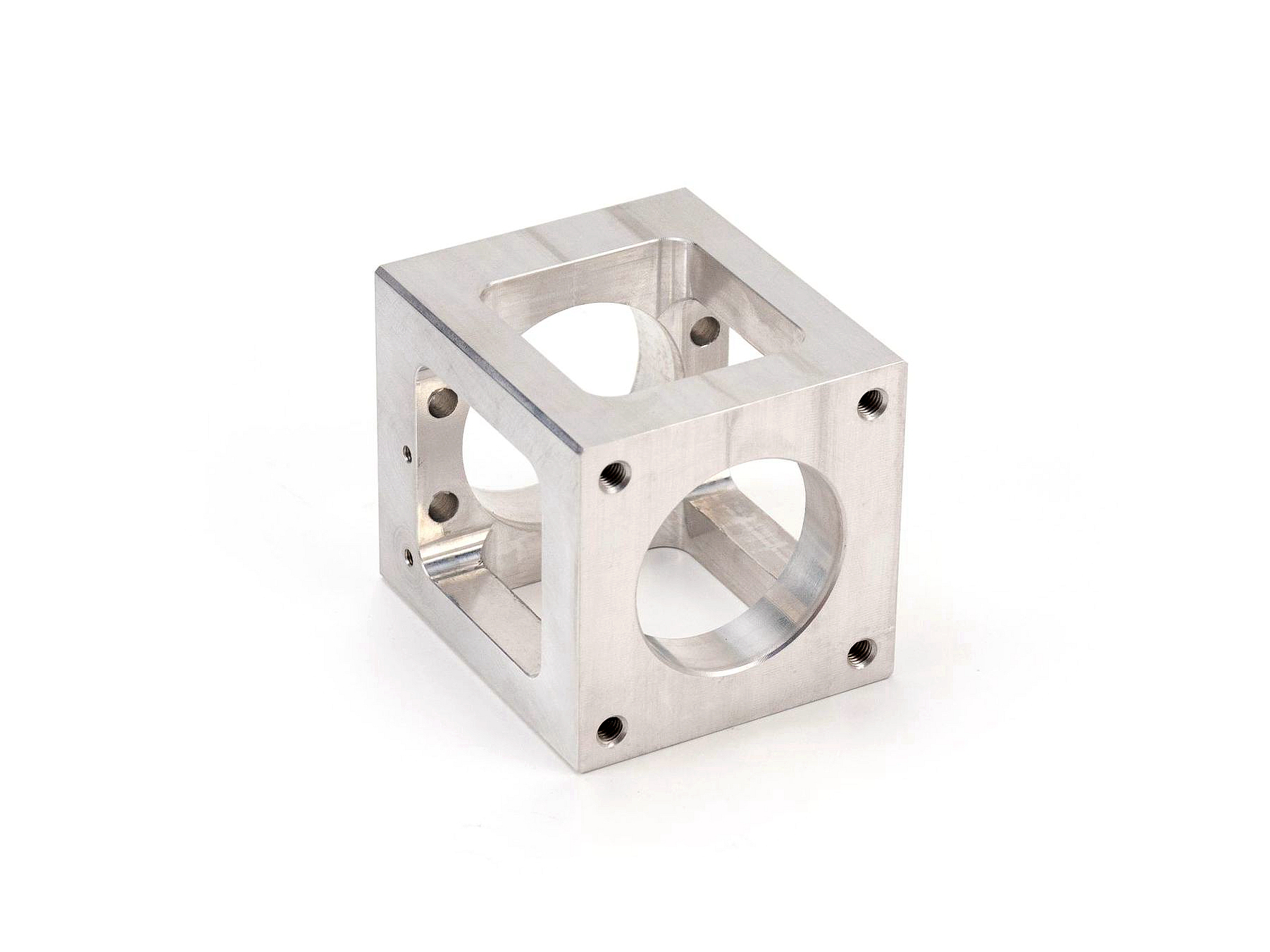Why Aluminum 7075-T6 is the Go-To Material for CNC Machining in the Aerospace Industry
Introduction
The aerospace industry demands materials with an exceptional strength-to-weight ratio, durability, and reliable performance under rigorous operating conditions. Aluminum 7075-T6 alloy is highly favored due to its remarkable tensile strength, lightweight nature, excellent fatigue resistance, and machinability. These qualities make it ideal for manufacturing aerospace components such as aircraft structural frames, wing spars, fuselage panels, and precision aviation hardware.
Advanced CNC machining technologies allow precise fabrication of aluminum 7075-T6 components, meeting strict aerospace standards. CNC machining guarantees dimensional accuracy, complex geometries, and exceptional surface quality, ultimately improving aircraft reliability, safety, and operational efficiency.
Aluminum 7075-T6 for Aerospace Applications
Material Performance Comparison
Material | Tensile Strength (MPa) | Yield Strength (MPa) | Density (g/cm³) | Typical Applications | Advantage |
|---|---|---|---|---|---|
570 | 505 | 2.81 | Wing spars, structural frames | Superior strength-to-weight, fatigue resistance | |
310 | 276 | 2.70 | Interior components, brackets | Good machinability, corrosion resistance | |
470 | 325 | 2.78 | Skin panels, fasteners | High tensile strength, good fatigue life | |
950-1100 | 880-950 | 4.43 | Engine components, landing gear | Exceptional strength, excellent corrosion resistance |
Material Selection Strategy
Choosing the ideal aerospace-grade material involves careful assessment of strength, weight, and application requirements:
Critical structural components such as wing spars, bulkheads, and primary airframe parts requiring high tensile strength (570 MPa) and excellent fatigue resistance prefer Aluminum 7075-T6, offering maximum performance with minimum weight.
Interior cabin components, secondary brackets, and fittings benefit from Aluminum 6061-T6 due to its lower strength (310 MPa), improved corrosion resistance, and ease of machining, balancing cost-effectiveness with functionality.
Aircraft skin panels, fasteners, and lightweight structural elements needing higher tensile strength (470 MPa) with good fatigue properties typically select Aluminum 2024, ensuring long-lasting performance under cyclic loads.
High-stress engine and landing gear parts demanding extreme strength and corrosion resistance choose Titanium Ti-6Al-4V (Grade 5), despite the higher weight, ensuring operational safety and reliability under severe conditions.
CNC Machining Processes
Process Performance Comparison
CNC Machining Technology | Dimensional Accuracy (mm) | Surface Roughness (Ra μm) | Typical Applications | Key Advantages |
|---|---|---|---|---|
±0.02 | 1.6-3.2 | Basic brackets, mounting hardware | Economical, reliable machining | |
±0.015 | 0.8-1.6 | Rotational components, spar fittings | Increased precision, efficient production | |
±0.005 | 0.4-0.8 | Complex structural parts, aerospace housings | High accuracy, superior surface finish | |
±0.003-0.01 | 0.2-0.6 | Precision avionics components, sensors | Maximum accuracy, intricate geometries |
Process Selection Strategy
Selecting CNC machining processes for aerospace Aluminum 7075-T6 parts depends on complexity, dimensional accuracy, and functionality requirements:
Basic brackets, mounting hardware, and simple aerospace components requiring moderate precision (±0.02 mm) economically utilize 3 Axis CNC Milling, offering consistent quality and affordability.
Rotational aerospace components and moderately complex fittings demanding improved accuracy (±0.015 mm) prefer 4 Axis CNC Milling, ensuring fewer setups and increased precision.
Highly complex structural components, wing spars, and aerospace housings requiring tight tolerances (±0.005 mm) and superior surface finishes (Ra ≤0.8 μm) significantly benefit from 5 Axis CNC Milling, optimizing structural integrity and reliability.
Precision avionics components, intricate sensor housings, and critical aerospace hardware requiring extreme accuracy (±0.003 mm) leverage Precision Multi-Axis CNC Machining, providing the highest level of performance and reliability.
Surface Treatment
Surface Treatment Performance
Treatment Method | Corrosion Resistance | Wear Resistance | Max Operating Temp (°C) | Typical Applications | Key Features |
|---|---|---|---|---|---|
Excellent (≥800 hrs ASTM B117) | Moderate-High | Up to 400 | Structural frames, brackets | Durable, corrosion-resistant surface | |
Excellent (≥1000 hrs ASTM B117) | Moderate | Up to 150 | Aerospace fittings, internal components | Strong corrosion resistance, paint adhesion | |
Excellent (≥1000 hrs ASTM B117) | High | Up to 200 | Non-critical external components | Durable finish, strong aesthetics | |
Excellent (~900 hrs ASTM B117) | Moderate | Up to 300 | Precision avionics parts | Mirror-like finish, friction reduction |
Surface Treatment Selection
Surface treatments for aerospace Aluminum 7075-T6 components depend on corrosion protection needs, wear characteristics, and operating environment:
Structural airframe components and mounting brackets requiring robust corrosion resistance utilize Anodizing, delivering durability and protection against harsh environmental exposure.
Aerospace fittings, internal cabin components, and structural elements needing strong corrosion resistance and excellent paint adhesion benefit significantly from Chemical Conversion Coating (Alodine), ensuring long-term operational reliability.
Non-critical external components and equipment housings needing durability and attractive appearance select Powder Coating, enhancing aesthetics and resilience to wear.
Precision avionics parts and components demanding a polished, mirror-like finish and reduced friction effectively use Electropolishing, improving functionality and visual appeal.
Quality Control
Quality Control Procedures
Precise dimensional inspections via Coordinate Measuring Machines (CMM) and optical comparators.
Surface roughness verification with high-precision profilometers.
Mechanical property testing (tensile, yield, fatigue) according to ASTM standards.
Corrosion resistance validation through ASTM B117 (Salt Spray Test).
Non-destructive testing (NDT) including ultrasonic and X-ray inspections.
Detailed documentation adhering to ISO 9001 and aerospace-specific quality standards (AS9100).
Industry Applications
Aerospace Aluminum 7075-T6 Component Applications
Aircraft wing spars and fuselage frames.
Landing gear components and precision fittings.
Structural brackets and hardware.
Precision avionics enclosures and components.
Related FAQs:
Why is Aluminum 7075-T6 used extensively in aerospace?
How does CNC machining enhance aerospace component precision?
What are common aerospace applications for Aluminum 7075-T6?
Which surface treatments best protect Aluminum 7075-T6 aerospace parts?
What quality standards apply to Aluminum aerospace machining?

